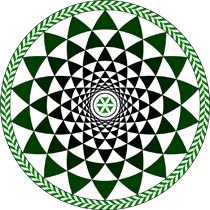Speaker
Ms
Elżbieta Gotfryd
(Department of Magnetic Materials and Nanostructures, The Henryk Niewodniczański Institute of Nuclear Physics Polish Academy of Science)
Description
`Nanoporous Al$_2$O$_3$ have a wide range of applications as a sensors, biosensors or energy storage devices. These templates are attractive due to their low fabrication costs.`
`The Al oxides with hexagonal close packed porous structure can be prepared by two step anodizing process with features tunable by the electrolyte composition and voltage. It was already shown [1], [2] that degree of pore ordering depends on first anodization time and the initial surface roughness. This work is focused on Al foil surface pretreatment procedure and first-step anodization parameters influence on order parameter of pore structure.`
`A series of porous anodic aluminium oxide samples were prepared by two-step
anodization of the high purity (99.999$\%$) aluminium foil in oxalic acid at temperature $\sim$ 17 $^\circ$C. The preparation of Al foils consisted of annealing at 600 $^\circ$C for 48 hours, oxide layer removal and fine chemical polishing. It was found that such a sequence allows to obtain a surface with roughness of approximately 10 nm.`
`The time of the first anodization was varied from 10 min to 15 hours, while the second anodization time was 10 minutes. Pores ordering was estimated by self-ordering parameter determined from the number of violations in hexagonal symmetry for 100 pores, and by comparison of Fast Fourier Transforms (FFT) obtained for SEM images of sample surfaces. It was found that increasing of first-step anodization time from 10 minutes to 2.5 hours
significantly enhances self-ordering parameter from 0.66 to 0.87, respectively. Improvement of FFTs’ symmetry confirms ordering enhancement. Further extension of anodization time do not affect the ordering. Therefore, the time of 2.5 h for first-step anodization followed by the annealing and chemical polishing of Al foil was found to be an optimum for well-ordered templates fabrication.`
References
[1] Y. Lei, W. Cai, and G. Wilde, Highly ordered nanostructures with tunable size, shape and properties: A new way to surface nano-patterning using ultra-thin alumina masks, `$\textit{Prog. Mater. Sci.}$`, `$\textbf{52}$`(4), pp. 465–539, 2007.
`[2] A. Maximenko, J. Fedotova, M. Marszałek, A. Zarzycki, and Y. Zabila, Magnetic characteristics of CoPd and FePd antidot arrays on nanoperforated Al$_2$O$_3$ templates, $\textit{J. Magn. Magn. Mater.}$, $\textbf{400}$, pp. 200–205, 2016.`
Author
Ms
Elżbieta Gotfryd
(Department of Magnetic Materials and Nanostructures, The Henryk Niewodniczański Institute of Nuclear Physics Polish Academy of Science)
Co-authors
Mr
Alexey Maximenko
(Department of Magnetic Materials and Nanostructures, The Henryk Niewodniczański Institute of Nuclear Physics Polish Academy of Science)
Prof.
Marta Wolny-Marszałek
(Department of Magnetic Materials and Nanostructures, The Henryk Niewodniczański Institute of Nuclear Physics Polish Academy of Science)
Dr
Yevhen Zabila
(Department of Magnetic Materials and Nanostructures, The Henryk Niewodniczański Institute of Nuclear Physics Polish Academy of Science)

